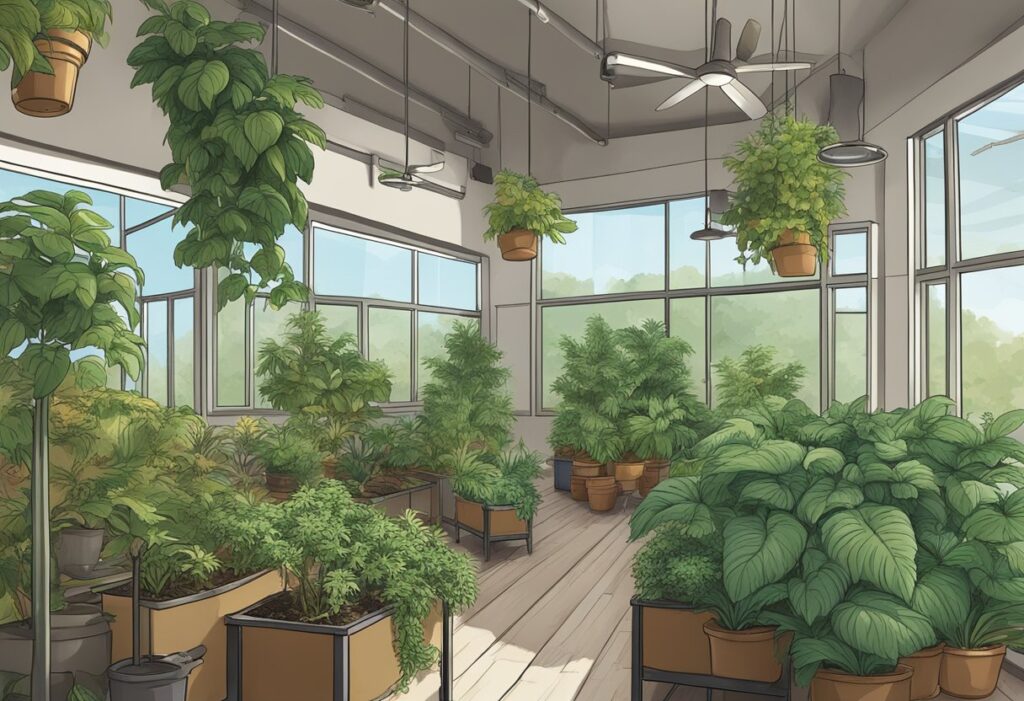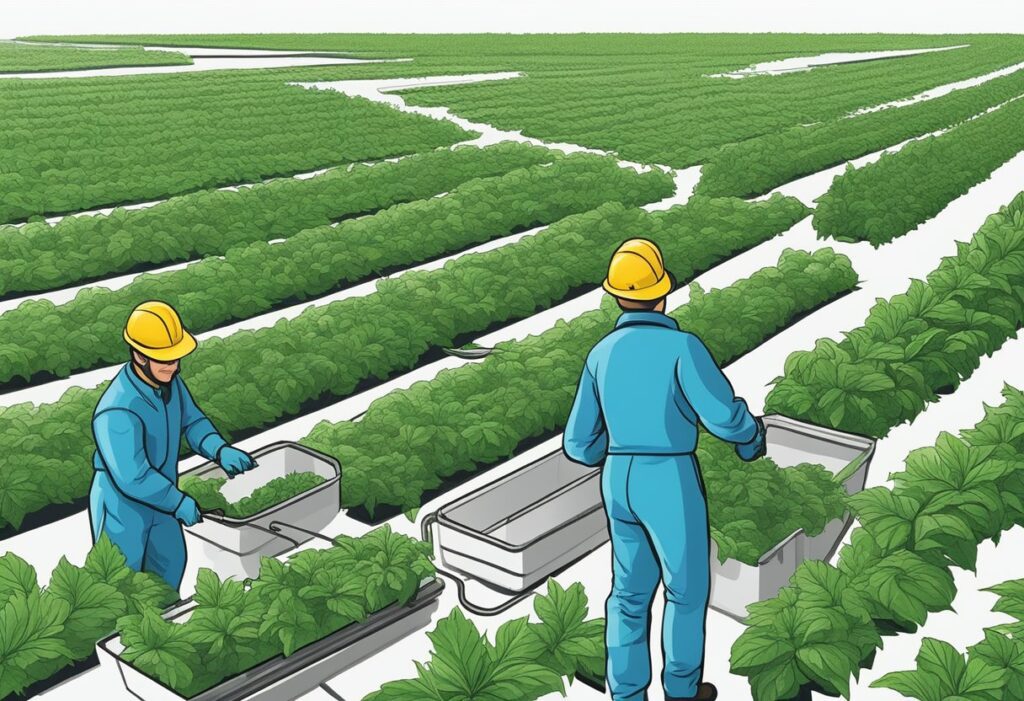
Your success in growing autoflowers in Canada hinges on understanding how these resilient
strains work with the unique Canadian climate, from selecting the right seeds to managing their environment effectively.
Autoflowers descend from Cannabis ruderalis, a species known for its hardiness and ability to flower based on age, rather than light cycles. This makes autoflower cannabis particularly well-suited for Canada’s shorter summers and varying light conditions.
When choosing autoflower strains, consider ones that thrive in cooler environments. Northern Lights Auto and Quick One are robust strains that can handle Canada’s climate and still produce substantial yields.
To maximize growth, maintain temperatures between 70-85°F (21-29°C) and humidity levels around 40-60%. Indoors, leverage full-spectrum LED lights, ensuring your plants receive sufficient light without being dependent on the variable outdoor conditions.
An autoflower’s life cycle is brief, completing from seed to harvest in about 8-10 weeks. It starts with germination, followed by a vegetative growth cycle, and ends after a flowering time that is typically shorter than other cannabis strains.
Remember, your diligence in the care of autoflower cannabis under the unique Canadian climate can lead to a bountiful and satisfying harvest.

When choosing between growing autoflowers indoors and outdoors, your main considerations
will center around control and environmental conditions. You’ll want to ensure optimal light, temperature, and protection from pests to get the best results from your cannabis plants.
Fully Controlled Environment: Growing indoors, you can maintain the necessary 18-20 hours of light per day which autoflowers thrive under, using a fixed light schedule throughout the entire growth cycle. This eliminates the risk associated with unpredictable outdoor light patterns, especially in regions with short summers like Canada
Efficiency and Consistency: By growing in pots, you gain the advantage of moving your plants if needed, and you can use space more effectively. Plants such as Cannabis indica and Cannabis ruderalis hybrids—which autoflowering strains are often comprised of—can take well to indoor environments.
Leveraging Natural Sunlight: The full spectrum of natural sunlight can potentially increase the potency and yield of your autoflowers, though achieving the ideal 12 hours of sun daily can be challenging outdoors.
Climate Considerations: Autoflowering strains are generally hardier than photoperiod strains, but sudden changes in temperature or humidity can still stress them. Outdoor growers should be mindful of their local climate conditions, which can vary widely across Canada.
By understanding these key aspects, you’ll be better equipped to set up your grow environment, be it indoors with all the bells and whistles of control and efficiency, or outdoors, where you work with nature’s variables to achieve robust growth.

In the world of growing autoflower cannabis strains, your approach to harvesting and processing
can make a significant impact on both the yield and the quality of your crop. Your timing and methods are crucial to ensuring high THC levels and potent buds.
To maximize both yield and potency, you need to harvest your autoflower strain at the right moment. This is when the trichomes, the tiny crystal-like structures on the buds, are cloudy with a hint of amber. Use a magnifying glass or a jeweler’s loupe to inspect the trichomes closely. Pistils, which should change from white to an orange or brown hue, are another indicator of maturity. These visual cues signal that THC levels are at their peak and that the cannabis plants are ready for harvest.
Once you’ve established the perfect time to harvest, the next steps are trimming and curing, which are essential to the quality of your cannabis.Trimming should be done soon after harvest. Begin by removing the large fan leaves, followed by the smaller sugar leaves that may have trichomes on them. Even though these contain THC, they can make your smoke harsh.
The final step, curing, involves drying the buds slowly and then storing them in airtight containers to develop the flavor and potency fully. Here’s a quick guide:
Curing can greatly enhance the benefits of your cannabis strains by improving flavor and ensuring a smooth smoking experience. It also allows for a more even burn and can help maintain THC levels.
In this section, you’ll find targeted advice to navigate the unique challenges of autoflower cannabis cultivation in the Canadian climate. Let’s dive into some of the most common queries you might have.
Autoflower seeds thrive in a consistent temperature range between 20°C to 25°C. Since Canadian weather can be unpredictable, consider using greenhouses or indoor setups to maintain control over environmental factors like humidity and temperature.
For maximum yield, ensure your autoflowers get plenty of light, up to 24 hours a day if possible. Enrich the soil with enough nutrients and avoid transplanting, which can disrupt root growth and reduce yields.
The best time to plant autoflower seeds in Canada is late May to early June, after the last frost when the soil temperature is warmer, ensuring a stable growth environment.
Sativa autoflowering plants typically require more space and light due to their taller growth habit. Ensure they’re not overshadowed by other plants and have sufficient room to develop fully.
Yes, some autoflower strains, like Northern Lights Auto or Blue Cheese Auto, have genetic traits that make them more resilient to cold climates and thus well-suited for the Canadian outdoors.
We ship and deliver world wide via USPS and various couriers.
We offer a wide range of secure and anonymous online payment options.
We care about you, our customer. Please contact us with any questions or concerns.
Find out more about the benefits of being a loyal and regular customer.
WE ARE EVERY GROWERS ONE STOP SHOP TO ACQUIRE PREMIUM CANNABIS SEEDS FOR SALE IN THE USA, CANADA AND AUSTRALIA

Farmers Lab Seeds 2024, | All Right Reserved
Seeds are sold as novelty items, souvenirs, and collectibles. They contain 0% THC. We encourage our customers to check the legislation in their Country, State, Province, and Municipality prior to purchasing items from our store. We do not provide growing information.
All seeds are sold as hemp, and lab tested under 0.3% THC. This product is not for use by or sale to persons under the age of 21. This product should be used only as directed on the label. It should not be used if you are pregnant or nursing. Consult with a physician before use if you have a serious medical condition or use prescription medications. A Doctor’s advice should be sought before using this and any supplemental dietary product. All trademarks and copyrights are property of their respective owners and are not affiliated with nor do they endorse this product.
These statements have not been evaluated by the FDA. This product is not intended to diagnose, treat, cure or prevent any disease. Individual weight loss results will vary. By using this site, you agree to follow the Privacy Policy and all Terms & Conditions printed on this site. Void Where Prohibited by Law.